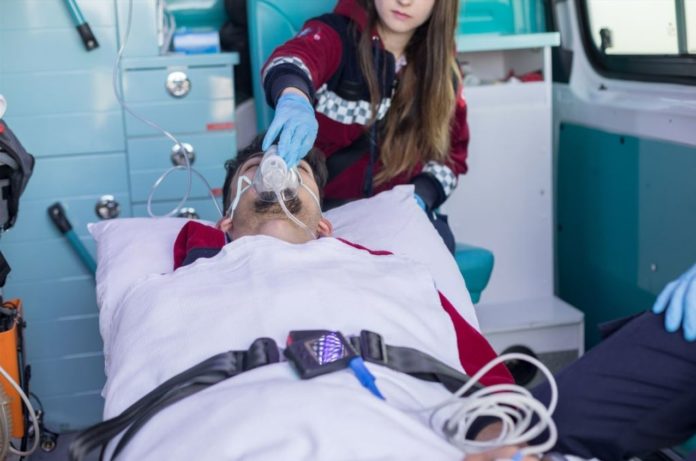New study says that delivering a fibrinolytic therapy after removing the thrombus increases the likelihood of ischemic stroke patients recovering without complications.
New research published in the journal “JAMA” demonstrates that administering a drug after the intervention to trap the thrombus improves patients’ prognosis dramatically. This approach could usher in a new era in the treatment of ischemic stroke around the world.
Following an ischemic stroke, restoring circulation is critical for preserving the function of the afflicted part of the brain and ensuring that patients recover with the fewest possible complications.
The study included 121 individuals who were treated at Catalan tertiary stroke hospitals. After mechanical thrombectomy, one group of patients got fibrinolytic therapy (r-tPA), while the other received placebo.
Mechanical thrombectomy is a type of treatment that involves inserting a catheter into the femoral artery and advancing a stent into the clogged artery with the goal of trapping the thrombus between the meshes of the stent and subsequently retrieving it. It is an extremely difficult treatment that is only performed by highly qualified personnel in tertiary hospitals.
“Seventy-one percent of the patients that are treated with mechanical thrombectomy have successful reperfusion, defined as a Thrombolysis in Cerebral Ischemia 2b/3, but the truth is that only 27% of the patients treated with mechanical thrombectomy are disability free at 3 months, defined as a Rankin score of 0 to 1,” says Ángel Chamorro.
“A prevailing interpretation for this suboptimal efficacy is that many of these patients may have irreversible brain damage by the time that reperfusion occurs. We think that this is certainly true, but there are other possibilities. We anticipated that impaired reperfusion of microcirculation despite full reperfusion on serial angiography could be an explanation for the suboptimal efficacy in many patients [who had] mechanical thrombectomy.”
To put this notion to the test, researchers designed the CHOICE study to assess the efficacy and safety of adjunct intra-arterial alteplase to placebo in patients with major artery blockage acute ischemic stroke treated with mechanical thrombectomy that resulted in successful reperfusion.
The researchers were informed in March 2020 that the placebo used in this trial could not be refilled due to its shelf-life expiration, and the trial was terminated in February 2021 after enrolling 121 people, or 60 percent of the total sample size (mean age, 71 years; 54 percent men).
The team randomly allocated patients with successful reperfusion to alteplase (0.225 mg/kg; maximum dose, 22.5 mg) or placebo. The primary outcome was modified Rankin score of 0 to 1 at 90 days follow-up. The secondary outcome was angiographic improvement, and the safety outcomes were incidence of symptomatic intracranial hemorrhage at 24 hours and 90-day mortality.
The median Alberta Stroke Program Early CT Score (ASPECTS) was 9 for both groups.
At 90 days, more patients in the intra-arterial alteplase arm compared with the placebo arm achieved a modified Rankin score of 0 or 1, with an absolute risk difference of 18.4% (95% CI, 0.3-36.4; P = .047).
According to the presentation, the improvements in modified Rankin score was not explained by improvement on angiography (9% vs. 8%; risk difference = 0.6%; 95% CI, –9.5 to 10.7).
Symptomatic intracranial hemorrhage at 24 hours occurred in 0% of the alteplase arm and 3.8% of the placebo arm (risk difference = –3.9%; 95% CI, –21.2 to 13.4). The occurrence of 90-day mortality was 8% in the alteplase arm compared with 15% in the placebo arm (risk difference = –7.3%; 95% CI, –19.3 to 4.6).
“The adjunct use of intra-arterial alteplase is safe and increases the likelihood of long-term excellent neurological outcome in patients with large vessel occlusion acute ischemic stroke and successful reperfusion following thrombectomy,” Chamorro adds.
“The clinical vs. angiographic mismatch encountered in the study stresses the limitations of conventional angiography to monitor these patients and highlights the relevance of the microcirculation to improve the clinical efficacy of mechanical thrombectomy. Since the study was terminated earlier, we want to caution and ask for a CHOICE 2 validation of these findings in order to change clinical practice.”
Source: 10.1001/jama.2022.1645
Image Credit: Getty
You were reading: This treatment improves the prognosis of stroke
